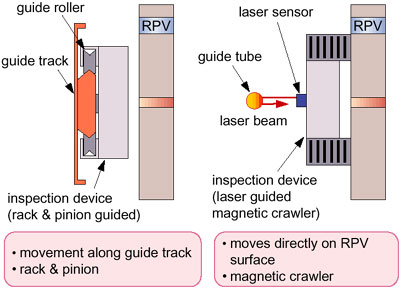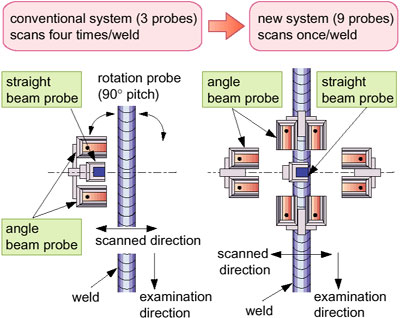At each nuclear power station, In-service inspection (ISI) is carried out to confirm that safety and performance requirements of components and equipment are maintained through mandatory periodic inspections. This is based on the Japan Electric Association Code (JEAC) as set forth by the Japan Electric Association. The reactor pressure vessel (RPV) of the High Temperature Engineering Test Reactor (HTTR) is also subject to periodic inspection. Ultrasonic testing (UT) of RPV welds, an ISI requirement, is also carried out in accordance with the JEAC.
The remote UT system is used to reduce radiation exposure to workers since the ISI of the RPV is carried out in a high-radiation environment. For the remote UT system used on boiling water reactors, the driving machine moves on a fixed track that was installed on the RPV before reactor startup. The ultrasonic sensor used has three probe channels and scans welds several times at each point.
The new UT system was developed to be compatible with HTTR equipment and to reduce examination time. This system moves on the RPV surface using a magnetic crawler, so a fixed track is not needed. Since it employs nine probes, only a single scan is needed to satisfy the inspection requirement.
With this system, inspection equipment is simplified, examination time is expected to be shortened, and radiation exposure to workers will be reduced. This remote UT system is also expected to be used on reactors built in the future. |


